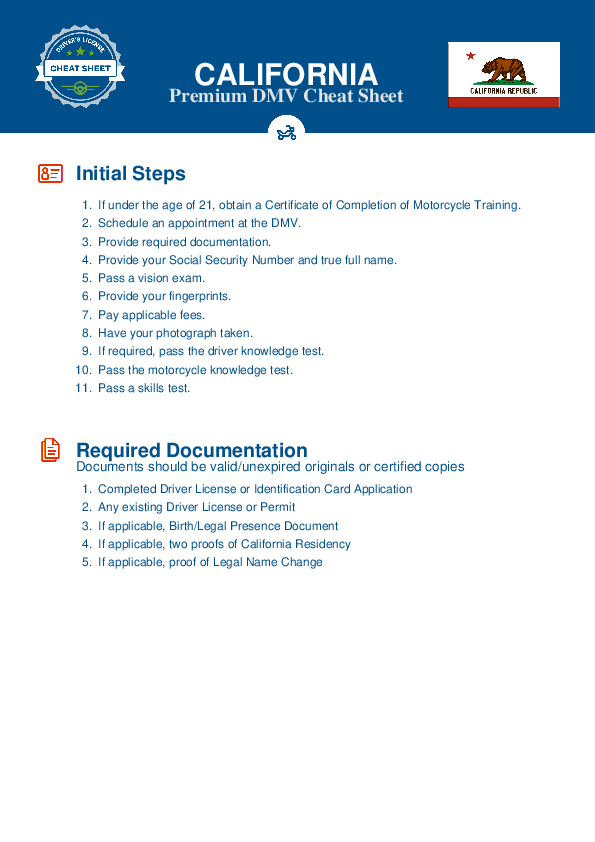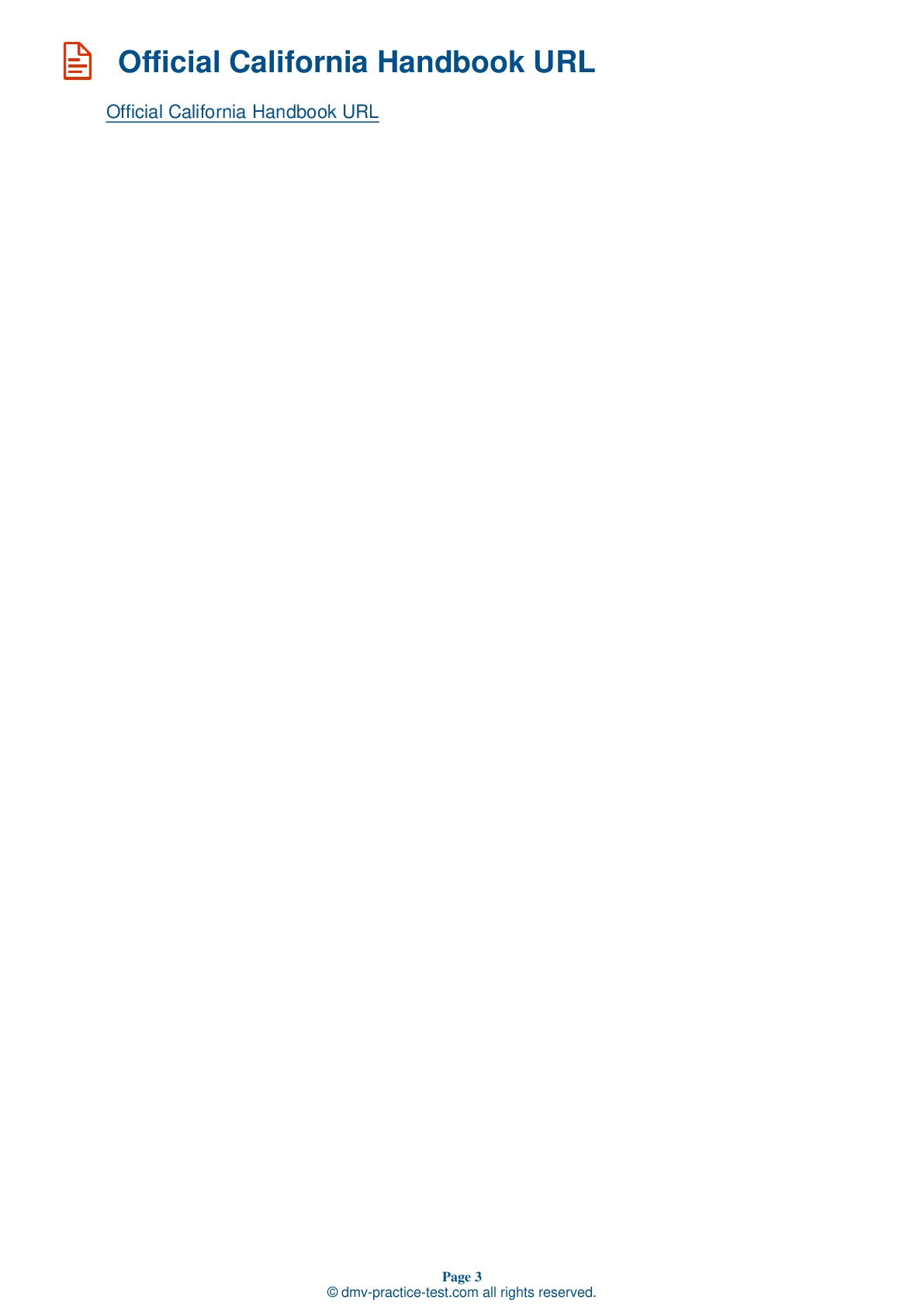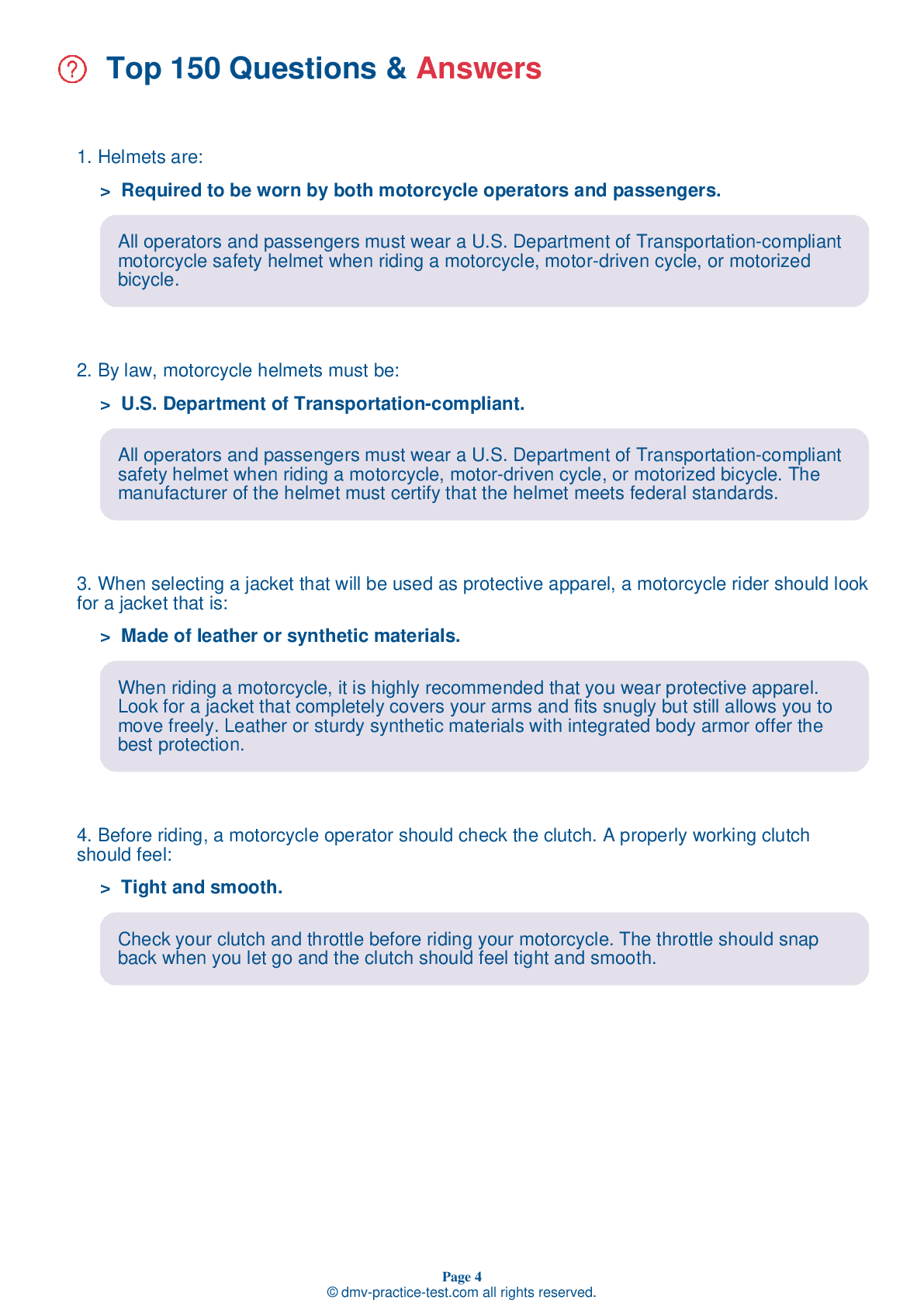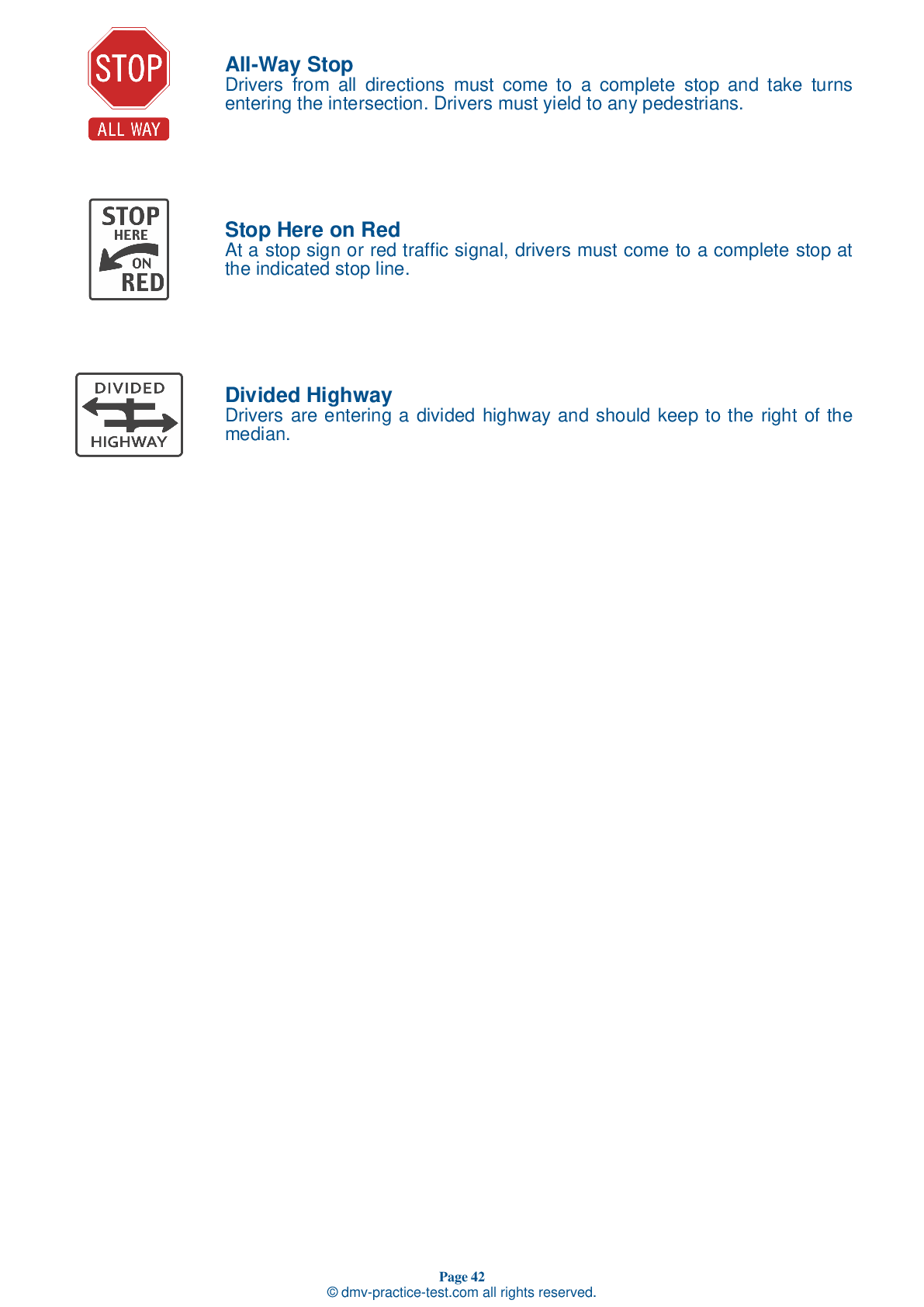Motorcycle Test | License CA 2024 | FREE Online Practice! #12 Page 3 of 4
Take this FREE motorcycle test (license in CA 2024) to check your knowledge of the road rules. To improve your results, download a motorcycle handbook online, study theory, and practice for free on our website. Still worried about how to get a motorcycle license in California in 2024? Check our website for more sample tests, train as much as possible, and boost your grades!
17 . A motorcyclist is usually most easily seen by other drivers when they are riding in which lane position?
If traffic allows, the center lane position is usually the best position for a motorcyclist to take when following a car because the center position will place them in the driver's rearview mirror. A motorcyclist should always be prepared to change positions if traffic or conditions require it.
18 . On a motorcycle, which brake provides the most stopping power?
The front brake provides about three-quarters of a motorcycle's total stopping power. Use both the front and rear brakes every time you stop.
19 . This yellow warning sign means:

This sign is placed on roads near schools to warn drivers to slow down, drive with caution, and watch for children.
20 . If your motorcycle starts to wobble, you should:
Do not try to accelerate out of a wobble because doing so will only make the motorcycle more unstable. Instead, grip the handlebars firmly, slow down by gradually closing the throttle, move your weight as far forward and downward as possible, and pull off the road as soon as you can. Avoid applying the brakes, as this may also worsen the wobble.
21 . If you have been drinking alcohol, you:
You should not ride a motorcycle if you are drinking or have been drinking. It may be unsafe to operate a motorcycle even if you are under the legal limit.
22 . In California, it is illegal for a person under the age of 21 to operate a vehicle with a minimum blood alcohol content (BAC) of:
In California, the legal drinking age is 21. For persons below this age, it is illegal to operate any motor vehicle with a BAC of 0.01 percent or higher. It may be unsafe to ride a motorcycle after consuming any amount of alcohol, even if the rider is under the legal limit.
23 . To reduce your reaction time, you should:
Ride with extreme caution when approaching an intersection. Cover the clutch and both brakes to reduce your reaction time, if needed.
See the exact questions that will be on the 2024 California DMV exam.
99.2% of people who use the cheat sheet pass the FIRST TIME
Jeneen was tired of paying $5/gallon. She got herself a scooter that required the motorcycle license. She studyed the motorcycle test cheat sheet and passed her test the next day!
Christopher tells us how he knew nothing prior to obtaining the motorcycle study guide, and he only got one question wrong because he clicked on the wrong answer by mistake.



